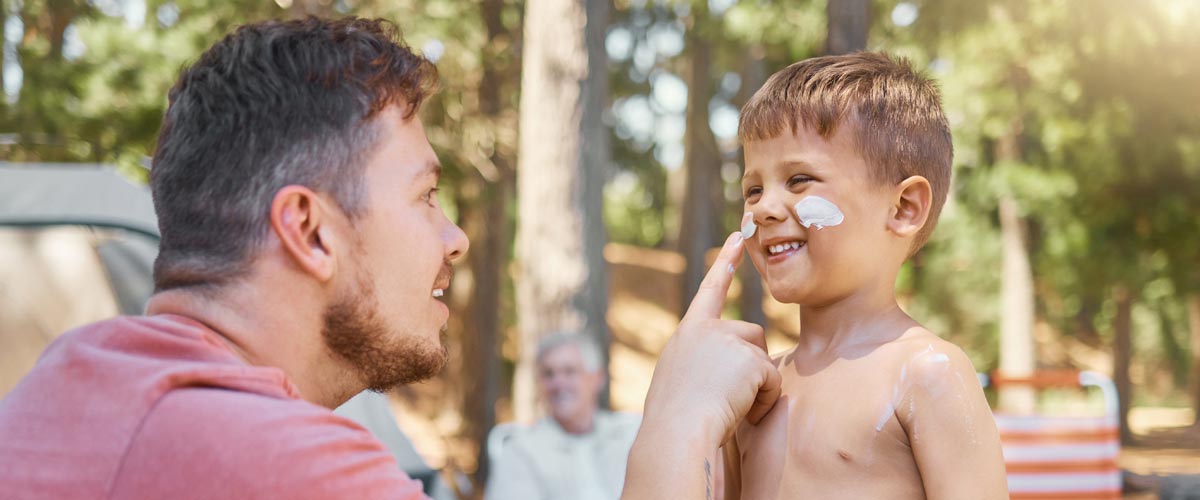As summer approaches, your family and kids will start heading to the beach, playing in the backyard, and enjoying the summer sun. Sometimes, the busy summer season means rushed day trips and unplanned outside adventures. It’s always good to have sunscreen on hand for all outdoor occasions. Sun protection is our primary priority, and should be one of yours, too.
Can I put sunscreen on my child?
Babies younger than 6 months should be kept out of the sun, and limiting sunscreen use to children older than 6 months and above unless advised otherwise by your doctor. When choosing the appropriate sunscreen for your child, consider using sunscreen suitable for both younger children and sensitive skin. If you’re unsure about using sunscreen due to skin sensitivities then talk to your GP or pharmacist. We also recommend patch testing your child prior to applying over the whole body.
Can my child use SunSense?
Although we don’t have a specific baby sunscreen range, all Sunsense sunscreens are suitable for babies 6+ months. Our fragrance-free sunscreen is made specifically for sensitive skin and the broad spectrum, the high SPF formula helps to protect skin from the sun’s harmful UV rays. Always read the sunscreen labels, and if you’re unsure about your child’s sensitive skin, speak to your pharmacist or doctor and always patch test a small area of skin prior to full body application. If you notice any reaction that you are worried about please email our friendly customer service team at customerservice@egopharm.com who will be able to assist you further.
How to protect your child from the sun
To help protect your child from the sun follow our SunSense steps.
- Apply sunscreen: Apply sunscreen 20 minutes prior to sun exposure. Cover all exposed areas of the body with sunscreen, including the arms, legs, chest, back, feet, face and neck. Make sure to reapply sunscreen every 2 hours especially after swimming or exercising to be safer in the sun. If you’re using leftover sunscreen from last summer, check the expiration date to avoid out-of-date sunscreen.
- Cover up, sunglasses and a hat: Sun safety not only comes from sun screen application, but by covering up with protective clothing, sunglasses and a hat.
- Find some shade during the hottest hours: Although UV rays are present for the most part of a summer's day, stay out of direct sunlight during the hottest parts of the day to avoid dehydration and overexposure to the sun. Keep your fluid intake high by drinking generous amounts of water when you’re in the sun for a long period of time.
- Your kids follow in your footsteps: teach your kids sun safety early so they develop proactive sun smart skills.
Sun safe skills can be developed by creating a positive routine around sun safety and can include wearing protective clothing, a hat and sunglasses, and applying sunscreen to the face and exposed areas of the body. Sun protection for kids, toddlers and babies is just as important as sun safety in adults. The sun can produce harmful UV rays, so it is important to help protect yourself and your family.
Always read the label. Follow the directions for use. Avoid prolonged sun exposure and wear protective clothing, hats and eyewear to further reduce risk. Frequent re-application is required.
